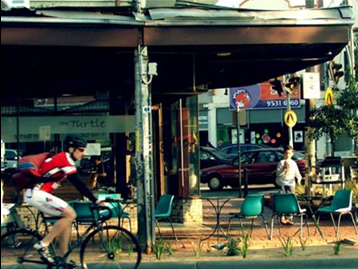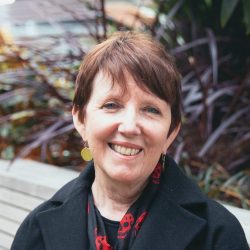The Centre of Research Excellence in Healthy, Liveable and Equitable Communities investigates cost-effective built environment interventions to create healthy, liveable and equitable communities in Australia
WHAT IS OUR VISION?
To create environments where people can be healthy and connected through access to liveable and equitable communities.
WHAT IS OUR MISSION?
To be a source of high-quality and policy-relevant research that informs healthy urban design and planning.
WHY DOES IT MATTER?
Globally, the burden of non-communicable diseases is growing. Common risk factors include insufficient physical activity, sedentary behaviour, poor diet and obesity. A whole-of-government, whole-of-society approach is needed to improve health in our communities.
WHY DO WE EXIST?
There is little evidence about the ways the built environment influences health and health behaviour outcomes, the environmental interventions likely to have highest impact, or the ‘dose’ interventions required to optimise health outcomes. Economic analyses of the health benefits and co-benefits (e.g., reductions in greenhouse gas emissions and traffic congestion) for delivering built environment interventions in both greenfield and established sites are in early stages of development.
The National Health and Medical Research Council (NHMRC) Centre of Research Excellence (CRE) in Healthy, Liveable Communities will seek to address these gaps by:
- generating and exchanging knowledge about the scale of, and thresholds for, high leverage built environment interventions;
- understanding the mechanisms and pathways through which they influence outcomes; and
- understanding the economic co-benefits of delivering those interventions.
This evidence is critical to inform evidence-based policy and practice. Thus, the final aim of this Centre will be to understand the barriers and facilitators in policy and practice reform and to evaluate tools and materials to help translate the research into action.
WHAT WILL WE DO?
This CRE in Healthy, Liveable Communities will generate and exchange new knowledge about:
- measuring policy-relevant built environment features associated with leading non-communicable disease risk factors (physical activity, obesity) and health outcomes (cardiovascular disease, diabetes) and mental health;
- causal relationships and thresholds for built environment interventions using data from longitudinal studies and natural experiments;
- the economic benefits of built environment interventions designed to influence health and wellbeing outcomes; and
- factors, tools and interventions that help translate research into policy and practice.
HOW WILL WE WORK?
The core values that drive our work are:
- Innovation
- Excellence
- Policy-relevance
- Collaboration
- Equity
- Capacity building
WHO IS LEADING THE WORK?
This project is being led by the Healthy Liveable Cities Group at the RMIT University Centre for Urban Research, with collaborative research nodes at the Australian Catholic University, Cancer Council (NSW), the University of Western Australia, and the University of Queensland.
OUR GOVERNANCE
Whilst the CRE is national, state-based work occurs in VIC, WA and QLD. Each state is governed by an Advisory Group made up of representatives from our formal partners (as listed on the NHMRC grant) as well as other partners identified as important stakeholders to progressing the work and translating it into policy and practice in each state. A member of each state has been invited to participate in a National Advisory Group. As the focus of the Centre is on research translation, the key role of the Advisory Groups is to assist in devising policy-relevant questions for the research team to explore, and to devise activities and advocacy that will assist with research translation (e.g. developing and promoting policy briefings based on the evidence developed as a result of the CRE, linking this evidence to state-based policy, and advocating for policy reform). However, we also propose building the capacity of early and mid-career researchers to work in partnership with policy-makers and practitioners. Members of the State Advisory Groups will be asked to play a mentoring role to support the work of PhD students and early and mid-career researchers on the team who are responsible for leading the work.
CONTACT US
For more information please contact our project administrator:
E: judy.boyce@rmit.edu.au Ph: +61 3 9925 4577
RESOURCES AND PUBLICATIONS
Download the below for a full list of newsletters, infographics, reports, publication lists and useful links:
CRE – Resources and Publications
THEME LEADS
Research is undertaken in collaboration with Australian policy makers and practitioners covering planning, urban design, transport planning and health. Policy-relevant research themes will emerge from their input, as will ideas about effectively disseminating research findings to meet their needs.
Part of the mandate of this NHMRC-funded centre is to build research capacity in the complex fields of health and the built environment and the translation of evidence in these areas into policy and practice. As a result, the centre supports an exceptional team of postdoctoral research fellows who lead each of the five themes, under the guidance of the Chief Investigators and in collaboration with other senior and associate investigators on the grant. The Centre is also building capacity in early career researchers by supporting a team of PhD students who oversee the work undertaken under each of the five themes.
THEME 1
Lead: A/Prof Hannah Badland
PhD student: Maureen Murphy
Aim: To create and validate ‘second generation’ Geographic Information System (GIS) measures of the built environment associated with health and wellbeing outcomes that are aligned with state and national health and urban planning policies.
THEME 2
Lead: Dr Jerome Rachele
PhD students: Fatima Ghani & Venurs (Hui Yee) Loh
Aim: To establish whether, and to what extent, the built environment is causally related to health and wellbeing outcomes.
THEME 3
Lead: Dr Lucy Gunn
Aim: To identify the quantity and mix of built environment interventions required to optimise health and wellbeing outcomes.
THEME 4
Lead: Dr Lucy Gunn
PhD students: Belen Zapata & King Wa Tam
Aim: To develop methods to determine the economic merit of built environment interventions, including their effect on health and wellbeing outcomes and health care expenditure, and to evaluate the merits of specific interventions in existing and new built environments.
THEME 5
Lead: Dr Paula Hooper
Aim: To work with the health sector, as well as sectors and agencies that shape built environments impacting on health (e.g., urban planners and designers, transport planners, engineers, the land development industry) to inform and influence decision-making, regulations, legislation policy and current urban design practice, and the integration and uptake of relevant evidence.
PARTNERS
Our industry partners assist in devising policy-relevant questions for the research team to explore, the dissemination of the research findings, and research translation (i.e. advocacy for changes to policy and practice)
- Final Report - NHMRC CRE in Healthy, Liveable Communities
- CRE RESOURCES & PUBLICATIONS
- Planning Institute of Australia
- Heart Foundation
- Victorian State Government Department of Health and Human Services
- Healthy Active by Design Website

Image credit: Jana Petrakov
Key People
Lead researchers
Other Chief Investigators
- Professor Simon Washington (University of Queensland) Professor Chris Pettit (University of NSW) Professor Takemi Sugiyama (Australian Catholic University) Professor Alan Shiell (La Trobe University) Professor Matthew Knuiman (University of Western Australia) Professor Anne Kavanagh (The University of Melbourne)
Associate Investigators
- Professor Adrian Barnett (Queensland University of Technology) Dr Karen Lamb (Deakin University) Dr Serryn Eagleson (University of Melbourne) Professor Matthew Tonts (University of Western Australia) Professor Brendan Gleeson (University of Melbourne)
International Collaborators
- Professor Chris Owen (University of London, St George) Dr David Ogilvie (University of Cambridge) Professor Jens Troelsen (University of Southern Denmark) Professor Larry Frank (University of British Columbia) Professor Subu Subramanian (Harvard University) Dr Gavin McCormack (Calgary University) Dr Karen Lee (Active Design Centre, City of New York)





